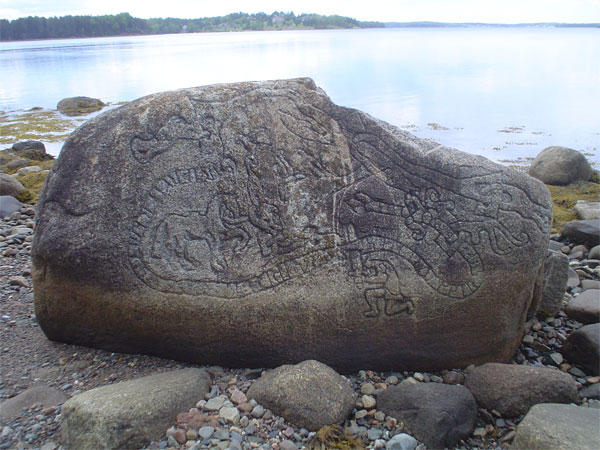
On a recent coastal walk here on the South Shore of Nova Scotia, we came across this interesting rock. It lies among other boulders and looks as if it has been here for a very long time. But has it, is it an ancient petroglyph or is it a modern carving, done by someone having a bit of fun?
The carved scene is complicated and looks like St George and the Dragon, or some sea serpent, with a knight and horse. So, who carved this horse on the stone? Or the knight who has just killed the dragon?
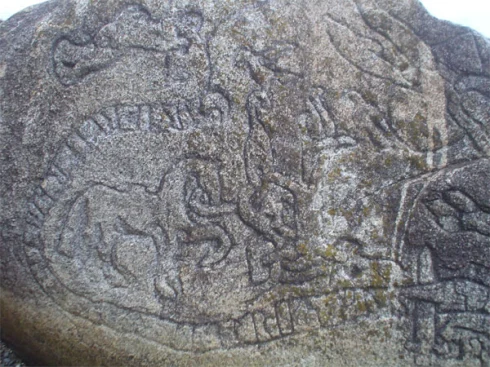
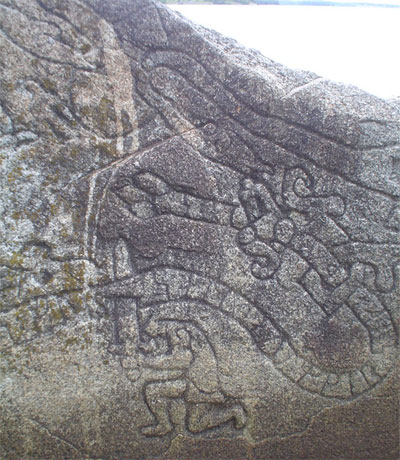
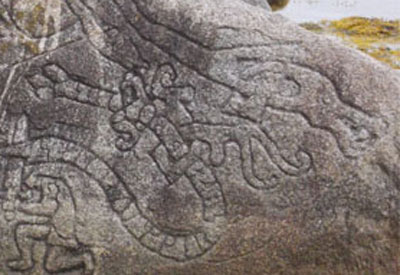
The Mi’kmaq recorded images of people, animals, hunting and fishing. With the arrival of the Europeans, they began to include images of sailing ships, men hunting with muskets, soldiers, Christian altars and churches, and small items like coins and jack-knives.
Can anyone solve this mystery for me? Is this a modern day carving or is it an ancient stone, with a meaning? There are many theories, but I’m sure there is a simple explanation.
At least this post has attracted a lot of interest and differing views.
Update – January 24th, 2017
In 2013, the Curator of Archaeology at the Nova Scotia Museum said it had been carved with a metal tool, so was probably done by a local artist.
Then the Director of Studies in History at Yale University said it was a clumsy copy of the Ramsund Carving.
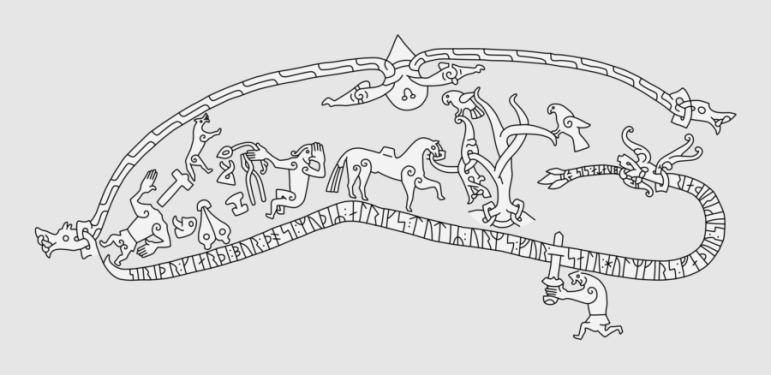
It really is very much a copy of this!
I continued to try to find out who had done the carving. Someone thought a local stone mason had carved it, but the name I was given said he had carved stones, but not this one.
Some theories that were voiced in the comments were that it was to do with the Knights Templar and Oak Island, a Memorial stone, the Halifax Chiseller, Rosslyn Chapel …………..
My photos have been copied and posted by someone, stating that this stone was covered in seaweed and seagull droppings, before it was cleaned up – with no photos to support such a claim!
I have tried several times to have a photo printed in the local newspaper, hoping that someone would solve this problem, but that never happened.
Last summer, I had a friend who is a dowser, look at the stone. He was very excited by it and gave me this report.
[The runestone is genuine and was created in 1167 during the month of October.
Three men were committed to creating this wonderful original which took them 7 days to complete.
The process used in creating this masterpiece is still a puzzle except that heat was used before the carving was carried out. No chisels were used.
At the period of carving the stone was further inland. However, due to environmental changes, erosion of the coast, the stone was finally situated on the beach. Much of the erosion was caused by ice pushing up against the cliffs in winter periods during the small ice age which finally ended in the late 1800s.
The stone is currently buried to a depth beneath the beach of nearly 3 metres. In other words there is more stone beneath the beach than above it.
There are 6 ley lines ( earth energy lines) crossing the centre of the stone. All are positive- some male others female.]
I’m afraid this theory is too much for me! October 1167, 3 metres beneath the beach, ley lines!
I put my post onto the Local Lunenburg Community Facebook Page and was told that this carving was done in the 1980’s by the nephew of 2 artists from the nearby beach cottage.
Now this is the one story that makes sense to me – no mystery or magic – just someone having fun and leaving their mark on the beach, and causing a good bit of discussion.
I think the mystery of the stone has been solved!

















Recent Comments